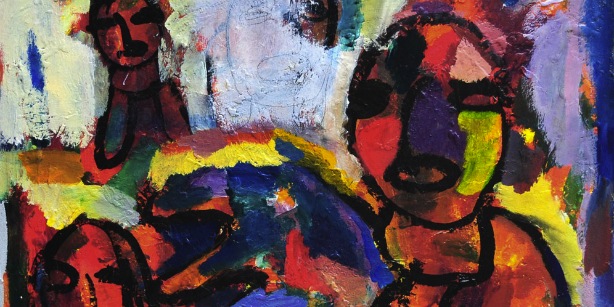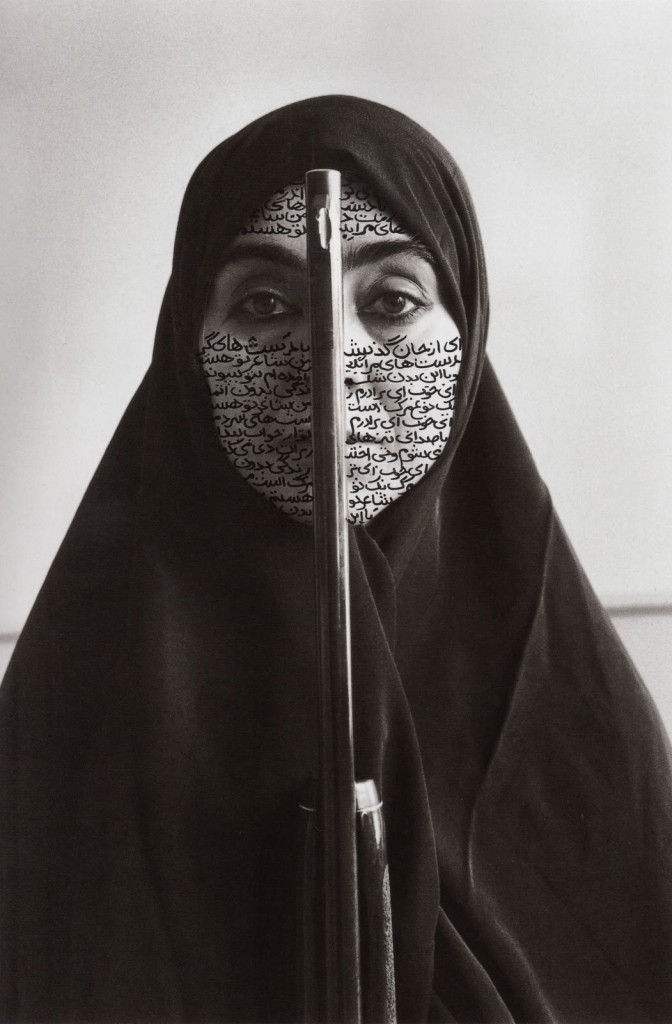Of Sand and Stars
MASHAAEL BASHEER ON JUDGING THE RELATIVE VALUE OF ART

Anas Homsi - Historic Speech (Detail)
Two years ago, I walked into a home accessories shop in Lebanon and bought a painting as a gift for a friend in Kuwait. A year later, I was invited to the Beirut Art Fair (BAF 2011), where I found myself surrounded by an eclectic assortment of artworks, ranging from sculptures and paintings, to installations and videos, among others. This year, I was again lucky to be able to visit the art fair and get ‘up close and personal’ with the Beirut art scene. However, while browsing through the artworks there, I began to question what I observed, and wondered what the difference was between the art hung in galleries and auction houses, and the piece I had bought for my friend (i.e. that which is sold in retail stores). Essentially, I asked myself: what makes a work of art worthy of being hung in an art gallery, as opposed to simply being sold in a store?
Firstly, in my opinion, a work of art should present something new, be it an idea, technique, or particular style. For example, let’s consider the case of Arabic calligraphy. Calligraphy as an art form has long existed among the Arabs, although when you behold a painting by the Tunisian artist Nja Mahdaoui, for instance, you are immediately taken to a realm beyond letters, writings, and calligraphy. Rather, Mahdaoui combines calligraphy with abstract patterns, in which his writings blur, and have no obvious meaning; yet, they merge to create an absolute visual form. As well, Mahdaoui is renowned for his use of parchment and papyrus paper – materials traditionally used in producing calligraphy – which further adds to the cultural ‘value’ of his abstract calligrams, as he prefers to call them.
‘Cultural value is what makes any piece of art alive - it gives it identity’, said the young Syrian artist Anas Homsi when I questioned him about a particular painting in a Beirut gift shop. The painting in question featured an abstract face, with the eyes being the only discernable features in the work, painted in soft blues, purples, and greens. ‘Yes, there are eyes which look straight at you - but do you feel it [the painting] is alive?’ my friend remarked, further adding that an artist could, for instance, simply draw a chair, whereas another could use the same object to symbolize power and authority. In such cases, as Anas noted, ‘you are portraying an idea - not just a thing’.

Shirin Neshat - Women of Allah #4
Cultural value is what makes any piece of art alive - it gives it identity - Anas Homsi
However, there is a wealth of ideas to be explored, and therefore innovation is also a critical element of a ‘worthy’ art piece. We see many paintings exploring the subjects of feminism, religion, and war, for instance, although not all of these works are necessarily unique and thought-provoking, which is why the use of symbols and metaphors, among other ‘devices’ are so important in giving a work of art its own unique identity and voice.
Symbolism, a movement against Realism, was introduced in the art scene back in the 19th Century, and since then, has given birth to some of the most striking works of our time. Pablo Picasso opted for this style in his depiction of the Spanish Civil War in his 1937 masterpiece, La Guernica. Likewise, Iranian artist Shirin Neshat’s photographs in her Women of Allah (1993 – 1997) series of women in chadors with poems by Forough Farrokhzad and Tahereh Saffarzadeh scrawled in Persian calligraphy over their limbs are laden with symbols that brilliantly address subjects such as desire, sexuality, and the condition of women in the Islamic Republic.
That being said, however, whether or not a work of art has the chance to see the walls of a gallery or art fair also has plenty to do with the entrepreneurial efforts of artists, and those around them. As Syrian artist Nizar Othman mentions,
The artist comes up with the ideas and figures and the medium to depict them, but his connections later play an important role in actually exhibiting the work. An artist should be outgoing when it comes to connections and whom they know, as well as persuasive and confident in the art they are presenting.
Thus, at the end of the day, it’s the ideas, artistic techniques and innovative approaches - as well as a dash of marketing - that make a particular work ‘worthy’ of being shown in galleries, as opposed to in retail outlets. As well, I believe any work of art worth its salt should possess the ability to communicate with its audience, as well as a sense of timeliness, such that it offers something new upon every glance. For instance, although I’m not a fan of landscape painting, the cities and villages depicted by Lebanese artist Louma Rabah never fail to capture my imagination, as the artist’s spirit so magically brings them to life.
To behold a work of art – that is, according to my expounded explanation of what I believe art to be – is not to simply come face to face with objects and materials; rather, it is to experience an emotional state, and engage in a dialogue not with words, but in the universal language of shapes, colours, and forms.
As my mother once remarked, ‘Comparing a painting in IKEA to one in the Guggenheim is like comparing the sand to the stars!’
|
Mashaael is the founder of the Al Maha art blog, as well as a news editor at the Kuwait News Agency (KUNA) and a human rights activist. As an art enthusiast and writer, Mashaael strives to shed light on the arts & culture scene in the Middle East - particularly among younger generations - and support emerging artists |
Comments
Powered by Facebook Comments





